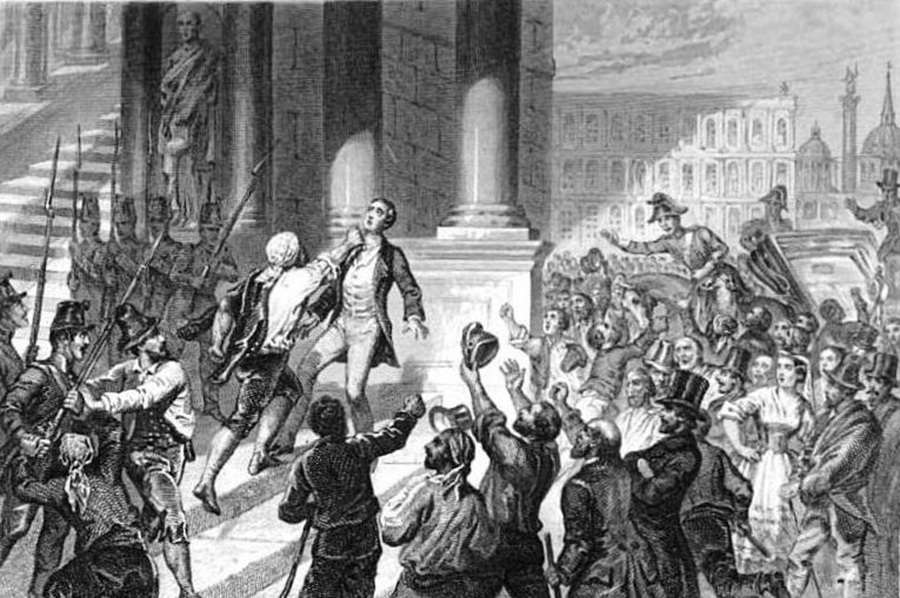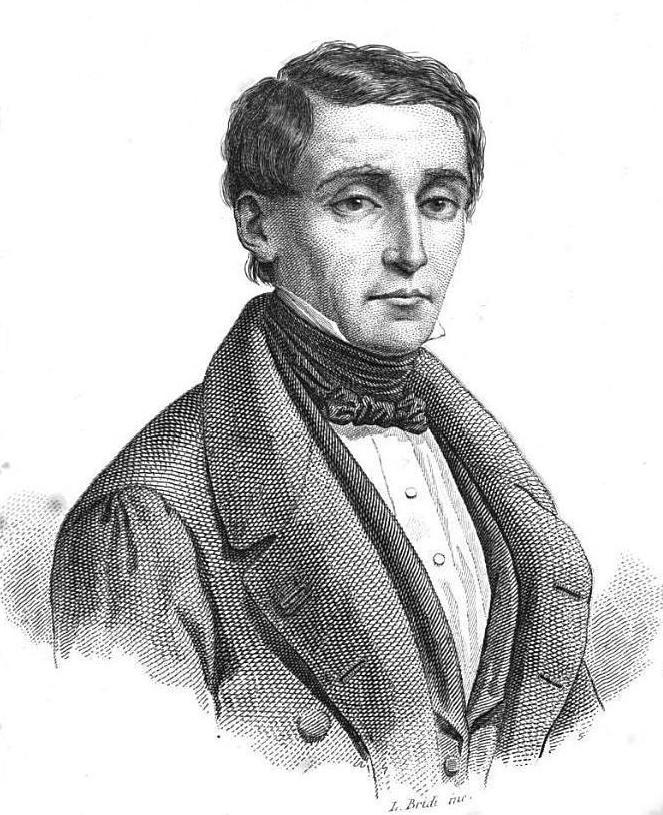On this day in 1848, the politician Pellegrino Rossi was murdered on the steps of the Palazzo della Cancelleria in Rome. His death ignited one of the most dramatic crises of the revolutionary year and pushed the Papal States into open revolt.
Rossi, Minister of the Interior under Pope Pius IX, had tried to impose a cautious, elite-focused reform programme. His policies offered voting rights only to wealthy citizens and ignored rising poverty and social unrest. Industrial change had unsettled Rome, yet Rossi refused measures that might ease the pressure on workers.
Discontent simmered for weeks. Secret societies, including Giuseppe Mazzini’s Young Italy, stirred anger in the streets. Meetings in cities as far as Turin and Florence branded Rossi an enemy of the people. Another source of rage was Pius IX’s withdrawal of papal troops from the First Italian War of Independence. Many Romans saw it as a betrayal of the national cause.
Also read: Padua uprising 1848
Pellegrino Rossi murdered in the Cancelleria
Rossi entered the Cancelleria on 15 November to present plans for a new constitutional order. Friends warned him about threats on his life. He refused to stay away, declaring that he was defending “the cause of the pope” and therefore “the cause of God”. Moments later, he climbed the palace stairs and met his attackers. One man struck him with a cane. As Rossi turned, another plunged a dagger into his neck.
The killer was widely believed to be Luigi Brunetti, son of the radical democrat Angelo Brunetti. Pietro Sterbini, a journalist and ally of Mazzini, was said to have encouraged the plot. Members of the Civic Guard stood nearby but did nothing. That evening, crowds gathered outside the home of Rossi’s widow and shouted: “Blessed is the hand that stabbed Rossi.”
The murder shattered what remained of order in Rome. The next day, a furious crowd surrounded Pius IX inside the Quirinale Palace. The Swiss Guard held the mob at bay for a time, but the situation deteriorated quickly. About a thousand members of the Civic Guard, police and soldiers entered the piazza and fired on the palace. The pope agreed to negotiate, facing demands for democratic government, social reforms and war against Austria.
Pius IX accepted a liberal ministry but refused to abdicate. He also forbade the government from issuing laws in his name. Eight days after the attack, he fled the city disguised as an ordinary priest. He slipped through a gate at night and travelled south to Gaeta, where the King of the Two Sicilies offered shelter.
Declaration of a Roman Republic
Rome suddenly had no functioning government. Into that vacuum stepped Mazzini, Aurelio Saffi and Carlo Armellini. On 9 February 1849 they proclaimed the Roman Republic. It championed ambitious ideals: religious tolerance, expanded civil freedoms and the abolition of capital punishment. Yet its life was brief.
France, led by Napoleon III, sent troops to restore papal authority. The decision reversed the younger Napoleon’s earlier revolutionary sympathies, but pressure from the French Church pushed him towards intervention. Garibaldi and his volunteers fought fiercely, but French forces took Rome in late June. With the fall of the city, the republic collapsed.
Rossi’s murder marked a decisive moment in Italy’s struggle for nationhood. It exposed deep rifts within the Papal States and accelerated a chain of events that reshaped Rome, the papacy and the wider Risorgimento.






